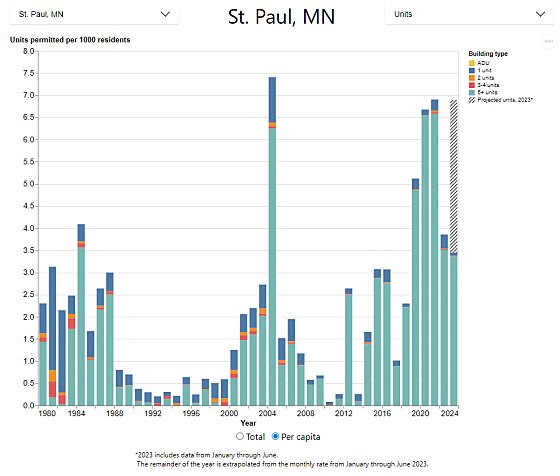Yet claims to the contrary persist. For example, my Cato colleague Ryan Bourne reported last week that dozens of economists wrote the federal government advocating national rent control and suggesting “that the economics of rent control itself is being fundamentally rethought, with economists more likely to reject the old Econ 101 supply and demand predictions.” The letter was part of a broader campaign of academics, politicians, and environmentalists advocating more rent regulations, again premised on the notion that economic fundamentals have broken down in the housing sector. A few weeks ago, meanwhile, the thoughtful and popular blogger Scott Alexander wrote a long piece questioning whether building more housing actually makes prices lower than they’d be without new construction (and suggesting it’s actually the opposite effect). And in the real world, high inflation and skyrocketing rents and home prices have pushed many municipalities to toy once again with rent control.
Bourne does a great job dismantling the economists’ letter claim-by-claim, relying on various studies to prove his points. But there’s also a real-world experiment going on in Minnesota that reinforces the papers’ conclusions and the “Econ 101” explanation for America’s housing problems. We’ve gone over some of this in past newsletters so here’s a quick recap: In 2018 Minneapolis announced a “2040 plan,” that, starting in 2020, made the city the first in the country to abolish single-family zoning and allow three-unit “triplexes” to be built almost everywhere. The plan also eliminated other land use regulations, such as parking minimums, that hindered multifamily construction, and it “upzoned” various transit corridors to let bigger structures be built without special municipal approvals. At the same time, the other Twin City, St. Paul, hasn’t (yet) deregulated in a similar fashion and—as we briefly discussed in December—implemented strict new rent controls, thus providing us with a unique real-world experiment of both housing deregulation and rent control in neighboring cities. So, how has this natural experiment worked out?
So far, just as we’d expect.
In particular, new data show that allowing private investors to build more housing does, in fact, moderate prices citywide and have large and important knock-on effects for a liberalizing community. First, economist Tim Maltman (h/t Scott Sumner) recently did a deep dive into how Minneapolis’ housing reforms have affected both the supply of new housing and area housing costs. While acknowledging that various factors—COVID-19, previous reforms, etc.—are also at play, he finds several clear indications that deregulation is working. First, the city is “leading major American Midwestern cities in housing construction per capita over the last five years,” despite having slower population growth than Columbus and Omaha.













